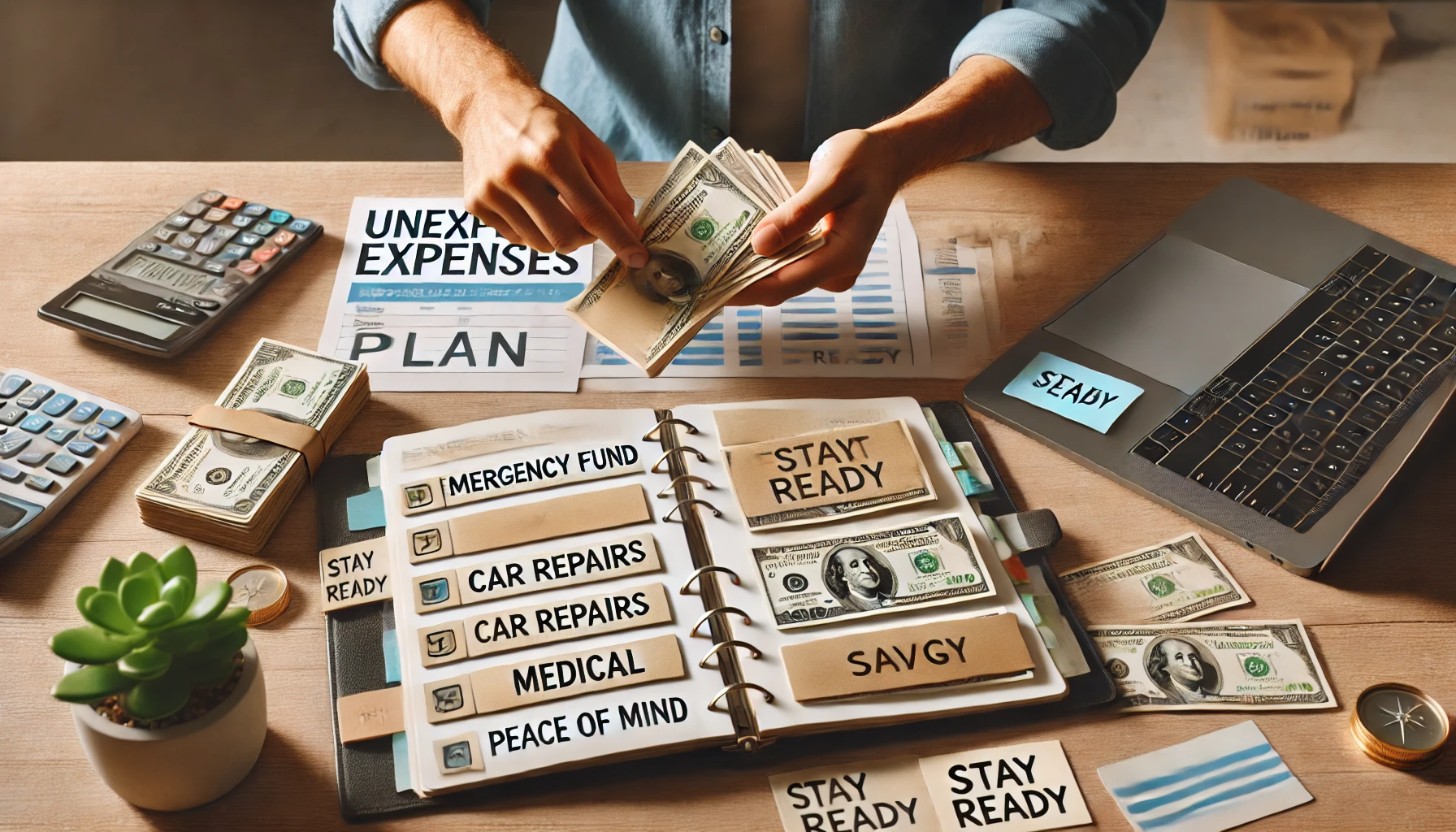Life is full of surprises—and unfortunately, many of them come with a price tag. From car repairs to medical bills or sudden job loss, unexpected expenses can derail your budget if you’re not ready.
In this article, you’ll learn how to prepare financially for those “what if” moments so they don’t become full-blown financial crises.
Why Preparing for the Unexpected Is Essential
When you’re not financially prepared, an emergency can:
- Force you into debt
- Delay your goals
- Increase stress and anxiety
- Create long-term financial instability
But when you are prepared, you can:
- Handle problems with confidence
- Avoid using credit cards or loans
- Focus on solutions, not panic
Let’s talk about how to build that kind of security.
Step 1: Build a Basic Emergency Fund
This is your financial first line of defense.
Starter Goal:
- Save $500 to $1,000 as quickly as possible
This amount covers common issues like:
- Flat tires
- Broken appliances
- Medical co-pays
- Emergency travel
Start small and build up over time.
Step 2: Create a Full Emergency Fund
Once the basics are covered, work toward saving 3–6 months of essential expenses.
What to Include:
- Rent or mortgage
- Groceries
- Utilities
- Transportation
- Insurance
- Debt minimums
This fund protects you if you lose your job or face a bigger emergency.
Step 3: Review Your Insurance Coverage
Insurance is another layer of protection against the unexpected.
Types to Consider:
- Health insurance (critical in emergencies)
- Car insurance with roadside assistance
- Renters/home insurance for damages or theft
- Disability insurance if you rely on a single income
Make sure your coverage fits your real risks—not just the minimums.
Step 4: Add a “Buffer” in Your Budget
A monthly buffer gives you breathing room even if you don’t have an emergency.
How It Works:
- Budget slightly below your income
- Leave $50–$100 unassigned each month
- Carry unused buffer into the next month
It gives you flexibility without dipping into savings.
Step 5: Use a Sinking Fund for Known “Surprises”
Some “unexpected” costs are actually predictable—we just forget to plan for them.
Create Sinking Funds For:
- Car maintenance
- Medical expenses
- Holiday shopping
- Annual insurance premiums
- Pet care
Save a little each month in a separate account or envelope.
Step 6: Keep Emergency Money Separate and Accessible
You don’t want to mix your emergency fund with daily spending money.
Tips:
- Use a high-yield savings account with no debit card
- Label the account clearly (“Emergency Only”)
- Keep it liquid—but not too easy to touch for impulse spending
Out of sight, out of temptation.
Step 7: Know What Qualifies as an Emergency
Define “emergency” before you’re stressed—so you don’t justify bad spending.
True Emergencies:
- Job loss
- Medical emergency
- Urgent home or car repair
- Unexpected travel for family
NOT Emergencies:
- Last-minute sales
- Vacations
- New phone because yours is “old”
Be honest and disciplined with yourself.
Step 8: Replenish After You Use It
If you dip into your emergency fund, that’s okay. It’s there for a reason. Just make a plan to rebuild it.
How:
- Pause extra spending for a few weeks
- Use part of bonuses, side income, or refunds
- Automate small weekly deposits until it’s full again
Your fund is a cycle—use, recover, repeat.
Final Thoughts: Be Ready So You Don’t Have to React
You can’t prevent emergencies—but you can be ready for them.
Start small, stay consistent, and prepare while things are calm. When life throws a curveball, you’ll feel grateful for every dollar you set aside in advance.
Preparation turns crisis into inconvenience. That’s financial peace of mind.
